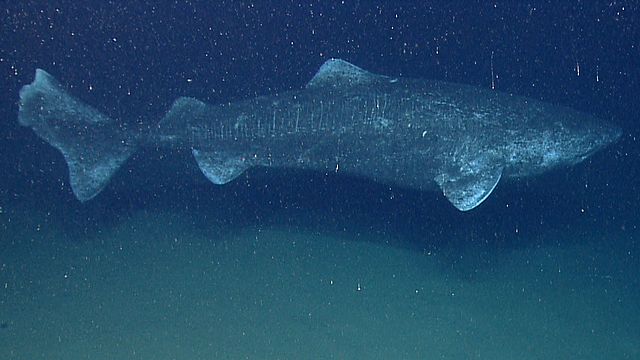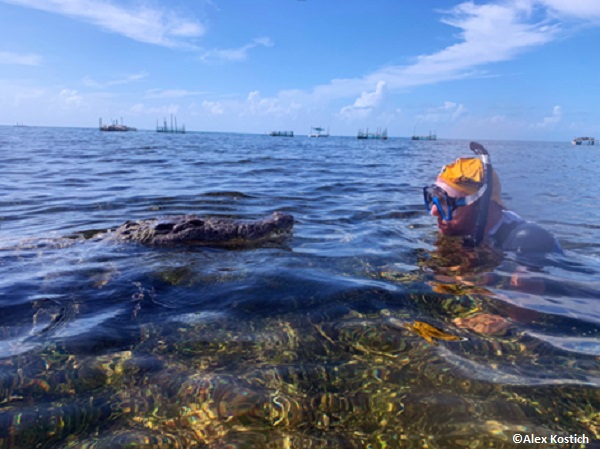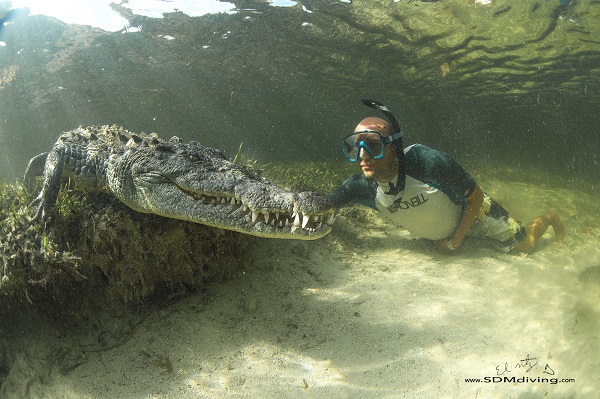
There’s an old Inuit legend about a mythical being called Sedna. The story goes Sedna is a giant and the daughter of the creator-god Anguta. Senda has a great hunger which causes her to attack her parents.
Angered, her father Anguta takes her out to sea and throws her over the side of his kayak. As she clings to the sides, he chops off her fingers. The huge severed appendages transform into seals, walruses, and whales which are hunted by the Inuit. Her body sinks to the underworld, where she becomes the ruler of the monsters within the deep.
One day, many years ago an old woman washed her hair in urine and as she dried it with a cloth, a gust of wind pulled the cloth from her grasp. The cloth blew into the ocean and in the pot where the Sedna urinates. Transforming the cloth into the great monster Skalugsuak, who tips over kayaks and consuming the people that fall into the water.
Skalugsuak is in fact the Greenland Shark. A magnificent beast, a 21-24ft meat eater that weighs up to 3100lbs. Chances are, if you live in the northern hemisphere, she lives in a ocean near you. One was even found in the Gulf of Mexico.
Should you be scared?…ermmm…no…maybe no one really knows??
Greenland sharks are thought to be mainly a scavenge feeder. They have often been observed feeding on whale carcasses, at depths up to 7200ft below the surface.

They feed by latching on with their narrow jaws and conical shaped teeth and rolling much like a crocodile would. Though they are very large, and certainly capable, Greenland sharks are not considered dangerous humans.
They are very slow moving, full throttle being clocked in at around 1.5mph. Greenland sharks may have some ambush abilities. Its stomach contents have been found to contain large fish, such as cod and flounder, and in some cases, even polar bear and reindeer.
Greenland sharks are not extensively fished and therefore not considered vulnerable. Its flesh is toxic due to its high urea content (the legend of Skalugsuak). For those that do attempt to consume the flesh without making special preparations would likely experience severe sickness/nausea. Effects which are extremely similar to a hang over one might receive the morning after a Las Vegas bachelor party.
Though it can be eaten, preparing a Greenland shark flesh is a highly labour intensive process, taking months to ferment or boiled in multiply changes of water. Though it is considered a delicacy to the Inuit, it is more than likely far too much work for the rest of us.
Despite the size and nasty taste, Greenland sharks are not completely invulnerable. They do suffer from a parasitic copepod that attaches to the sharks eye and feeds on the shark’s corneal tissue leading to blindness.
To be honest not a lot is known about this shark. We do know Greenland sharks give birth to live young, but we don’t know how long they live. All estimations are purely guesses. There have been tagged Greenland sharks caught 16 years after original tag date.
If this is your introduction to the Greenland shark, I hope you have enjoyed learning a little about this mighty fine and interesting beast.
Thanks for reading
Steve Smith
![]()
Follow Mr. Smith on Twitter @ReverendBiz
Be sure to check out his other articles. Including Sharks and the UK part 1 and Was it worth it? 172 sharks culled


